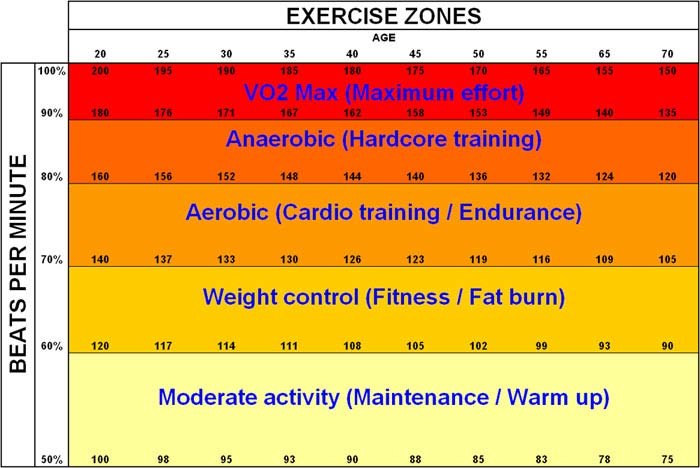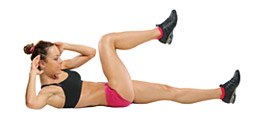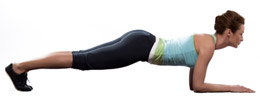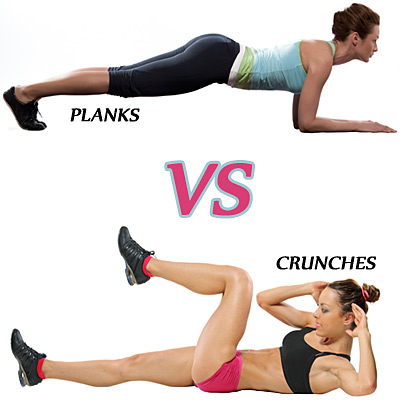- Like
- SHARE
- Digg
- Del
- Tumblr
- VKontakte
- Flattr
- Buffer
- Love This
- Save
- Odnoklassniki
- Meneame
- Blogger
- Amazon
- Yahoo Mail
- Gmail
- AOL
- Newsvine
- HackerNews
- Evernote
- MySpace
- Mail.ru
- Viadeo
- Line
- Comments
- Yummly
- SMS
- Viber
- Telegram
- JOIN
- Skype
- Facebook Messenger
- Kakao
- LiveJournal
- Yammer
- Edgar
- Fintel
- Mix
- Instapaper
- Copy Link
 Formula for Fit Abdominals
Formula for Fit Abdominals
“What is the best way to get fit, toned abs?” I’m asked this question all the time by clients and group participants, and when I don’t reply to them with some variation of a crunch, they’re shocked. The truth is you can get fit, strong abdominals, and NEVER do a crunch. Let me explain.
Fat Burning

First, you need to burn fat with appropriate exercise and reduce your calories. The main ingredient in your exercise program must be cardiovascular exercise. The body works by burning fat throughout your entire body. You cannot spot reduce fat in one isolated area.
Depending on your fitness level and how new you are to exercise, steady state cardiovascular exercise may be the best option for you. As your body adjusts to the demands of exercise, alternate bouts of high intensity exercise with bouts of lower intensity. This is an even better option because it boosts your metabolism by activating Excess Post-exercise Oxygen Consumption, (EPOC), the “afterburn” effect, which causes extra calories to be burned as your body recovers from the high intensity bouts.
My recommendation is for circuit training workouts that combine both cardio and resistance exercises. This exercise combination is truly the most efficient and effective form of fat burning for a couple of reasons.
First, you’ve got your cardiovascular exercise, performed in intervals in between resistance training exercises. Consider making those intervals high intensity to burn even more calories to activate the afterburn effect.
Second, because of the resistance training exercises, your metabolism gets a long-term boost from the EPOC/afterburn effect during the days you’re recovering from the workout. Additional calories are burned as your body repairs the tiny micro tears in the muscle fibers. More muscle mass means higher metabolism, and over time, your body will burn more calories, even at rest. And yes, during these exercises the abdominals are fully engaged to help hold good posture and correct form. So, during upright exercises, your abdominals are being strengthened though you may not realize it.
Planks vs. Crunches
Both planks and crunches are strengthening exercises, and neither of them burn fat. There is a huge difference, however, in how each goes about accomplishing their job. The main difference is how many muscles are being used.
Crunches:
 Basic Crunch Position
Basic Crunch Position
While lying supine, on your back, knees bent, feet planted on floor, lift the shoulder blades a few inches up off the floor. Keep your chin up off your chest, and place hands across chest to ensure you’re not pulling on your neck.
In the crunch, or many variations of the crunch, the areas of the abdominals are mostly isolated in their work, focusing only on that part of the body. As you lie on your back, you contract and shorten the abdominal muscles, mainly the rectus abdominis, with some help from the obliques, in the action of spinal flexion as you slightly bring your shoulder blades up off the floor.
Planks:
 Basic Plank Position
Basic Plank Position
In a prone position, facing the floor, place palms or elbows directly below shoulders to support your upper body. Extend legs, thighs and feet together, and balance on the balls of your feet. Make your body stiff like a plank, holding your spine in a straight or neutral position, from your head to your heels.
The plank works the body in an entirely different way. With the core of the body as the main focus, almost every muscle in the entire body is engaged. While performing a plank you are holding an isometric contraction, whether you are performing a basic plank, or one of its many variations. An isometric contraction is one in which a muscle is exerting force, but neither shortens nor lengthens, so there is no movement at the joints. The muscles that are engaged to stabilize you in the plank are – your front abdominals or rectus abdominis, inner and outer obliques, and the transverse abdominis which is the deepest level of abdominals that stabilize your spine. Also stabilizing you are your erector spinae muscles that run along the spine, your hips, thighs and glutes, parts of your lower legs, your rhomboids and trapezius muscles around your scapula, your chest, your serratus anterior muscles along your sides, the shoulders, including your rotator cuff muscles of your shoulder joints, and your triceps. Any variation of the plank also gives the body a balance challenge, again working your body in a completely different and more efficient way than a crunch.
Spine Safety
 Spine safety is also a factor in why planks should be your focus. While doing the plank, the spine is kept in its “neutral” position. This means that on a profile, you could imagine a straight line from your ear to your shoulder, down to your hip, knee and ankle. The result is that the spine is protected, and the neck isn’t pulled or curled dangerously as in an excessive or poorly performed crunch. However, there is a specific time to focus on isolating the abdominals, only if you chose to make those muscles bigger. Truly, the best time is when you’re nearing your weight loss goal. My point is that abdominal exercises sculpt and make the abdominal muscles bigger, but you can’t see them until you’ve burned away your fat!
Spine safety is also a factor in why planks should be your focus. While doing the plank, the spine is kept in its “neutral” position. This means that on a profile, you could imagine a straight line from your ear to your shoulder, down to your hip, knee and ankle. The result is that the spine is protected, and the neck isn’t pulled or curled dangerously as in an excessive or poorly performed crunch. However, there is a specific time to focus on isolating the abdominals, only if you chose to make those muscles bigger. Truly, the best time is when you’re nearing your weight loss goal. My point is that abdominal exercises sculpt and make the abdominal muscles bigger, but you can’t see them until you’ve burned away your fat!
The Bottom Line
So now you know how to get fit toned abdominals and never do a crunch. Get your focus off crunches and put your focus on eating healthfully, doing all forms of cardiovascular exercises including high intensity interval training, activate the EPOC/afterburn effect at its most powerful level by adding resistance exercises, and perform all variations of planks for your floor exercises. You’ll get a conditioned body, including fit, toned abdominals, a strong core, and a healthy, non-injured spine to go with it.
References:
1. Delavier, F. (2006). Strength Training Anatomy, Second Edition. Champaign, IL: Human Kinetics.
2. Vella, C.A. & Kravitz, L. (2004). Exercise After-Burn: A Research Update, IDEA Fitness Journal, 1(5), 42-47.
About Rochelle Ramirez
Author's Website Rochelle Ramirez is an enthusiastic personal trainer and wellness speaker. She holds personal trainer certifications from the NSCA and ACE, is a certified group instructor through AFAA, a certified Aqua Fitness instructor through APAI, and is a Battling Ropes Level 1 Coach. Rochelle’s specialty is in designing highly effective, low impact workouts that focus on the needs of Older Adults and Senior Population. She also holds a BA in Liberal Studies with a minor in English from Cal Poly Pomona, and graduated from CNI College with a certificate in Personal Training / Exercise Science. Rochelle’s philosophy is simple; she believes that the human body is the greatest work of art, and that it’s our responsibility to move it correctly and feed it healthfully for a lifetime.

